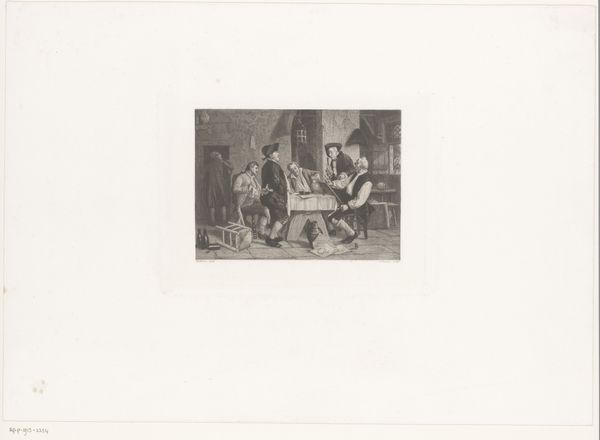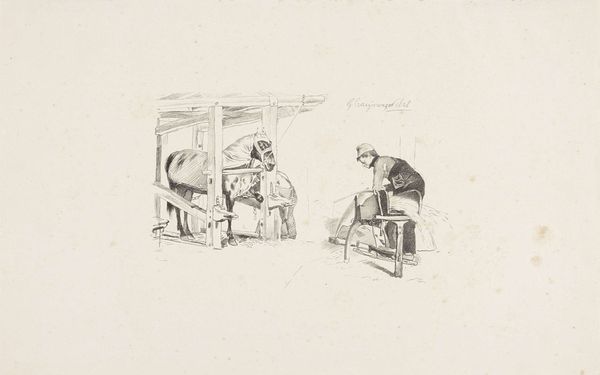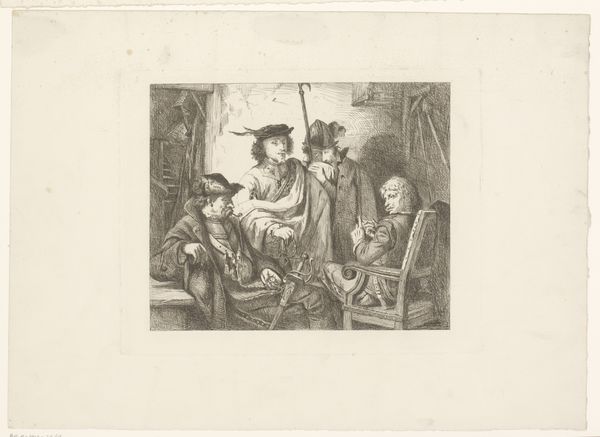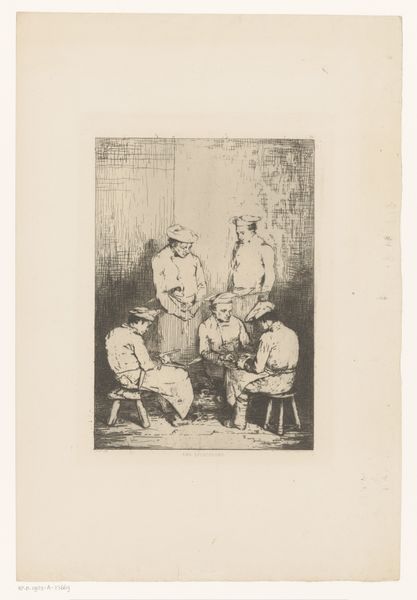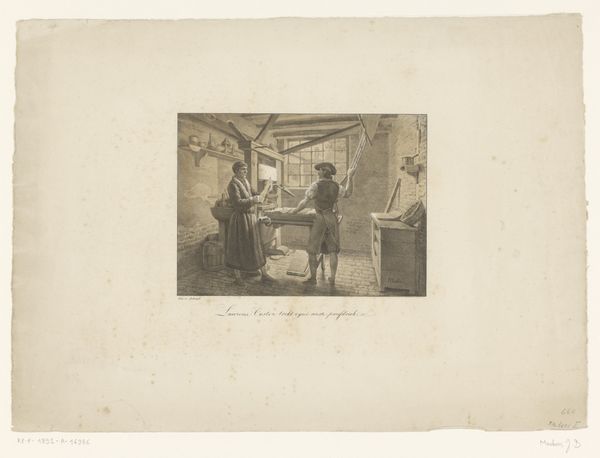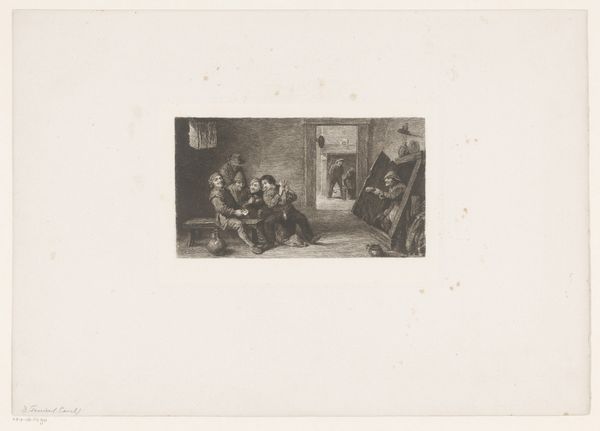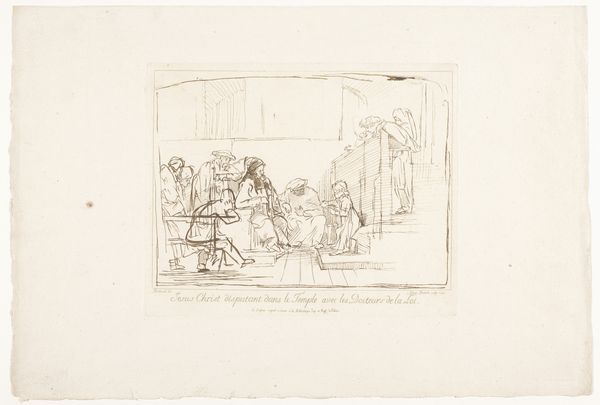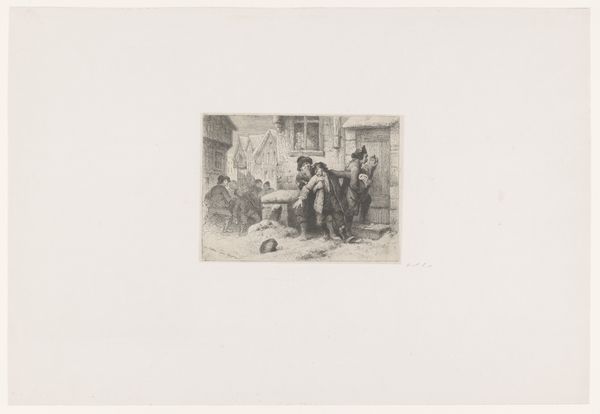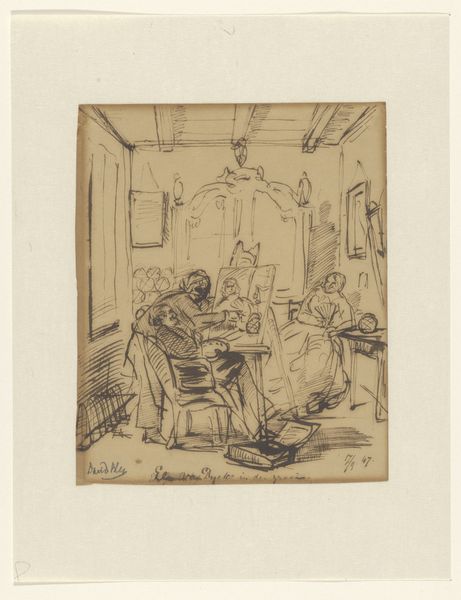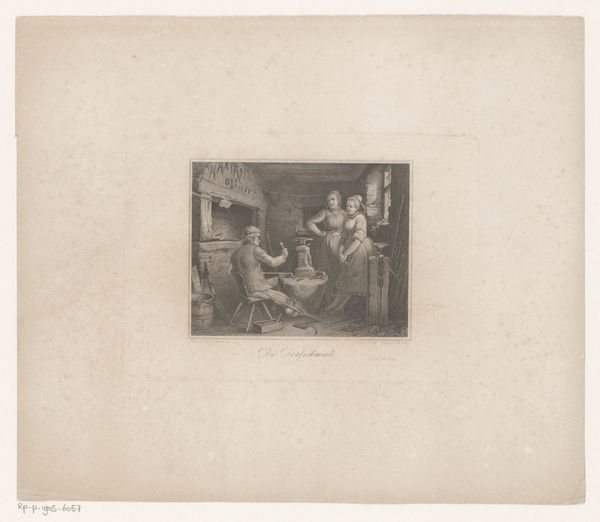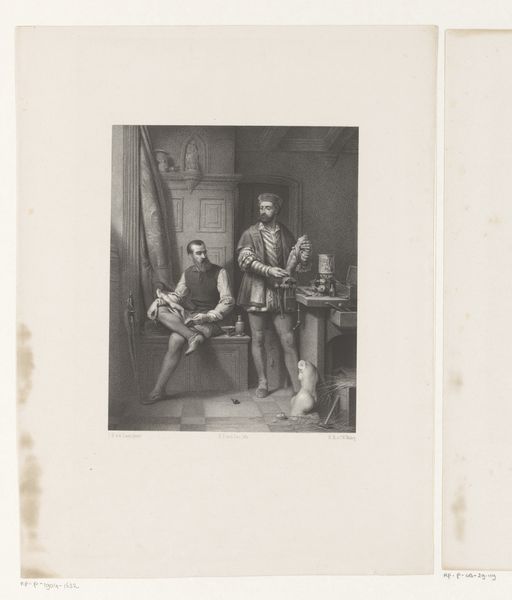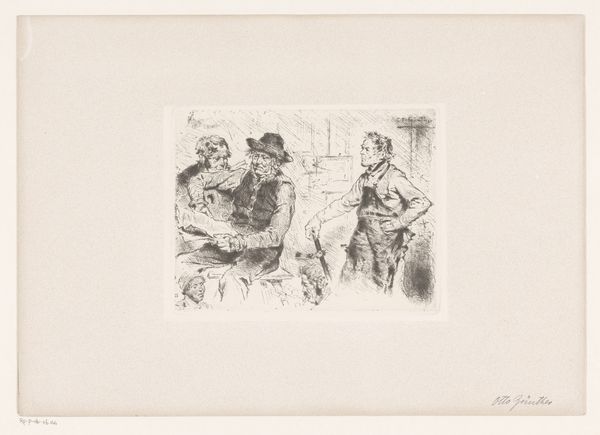
print, etching
#
portrait
#
neoclacissism
# print
#
etching
#
etching
#
genre-painting
#
history-painting
Dimensions: 218 mm (height) x 213 mm (width) (plademaal)
Editor: Here we have "Lærer og to drenge" or "Teacher and Two Boys", an 1832 etching by Christian Andreas Schleisner. It's a small print, seemingly depicting a classroom setting, but there's a definite air of melancholy to the scene. What do you see in this piece? Curator: What immediately strikes me is how this seemingly simple genre scene speaks volumes about power dynamics and access to knowledge in 19th-century Denmark. Etchings like these were often circulated to promote certain ideals, and we must ask: whose perspective is being validated here? Consider the composition – the teacher occupies a dominant, central position while one boy actively learns and the other looks on with a somewhat pained expression. How might ideas about class and social mobility be visualized in this print? Editor: I hadn't really thought about the social commentary. The boy standing seems particularly excluded somehow. Is this perhaps commenting on educational inequality? Curator: Precisely. Think about the period. Neoclassical ideals, with their emphasis on reason and order, were being challenged by growing social unrest. Does this image subtly critique the rigid structures of education and society? Could it be subtly highlighting the limitations placed upon individuals based on their social standing? Who do you think had access to education, and who was excluded at this time? Editor: It seems that education was really restricted by class. Looking at the etching through that lens definitely gives it a sharper edge. I was mostly concerned about the general sad tone. Curator: Indeed, and that melancholic tone may also be read as a symptom of the era's anxieties. The artwork encapsulates the zeitgeist, where social mobility, though theoretically possible, often remained elusive for many. Consider, too, how the domestic setting reflects not just a learning environment, but a system deeply entrenched in the fabric of daily life and privilege. How would such conditions affect the lives of the figures involved? Editor: Thanks for that insight. I now understand there are more complex things at play here. Curator: Art always has a purpose. By seeing art as enmeshed with history, politics, and social conditions, we can gain deeper meanings than just mere artistic beauty.
Comments
No comments
Be the first to comment and join the conversation on the ultimate creative platform.
